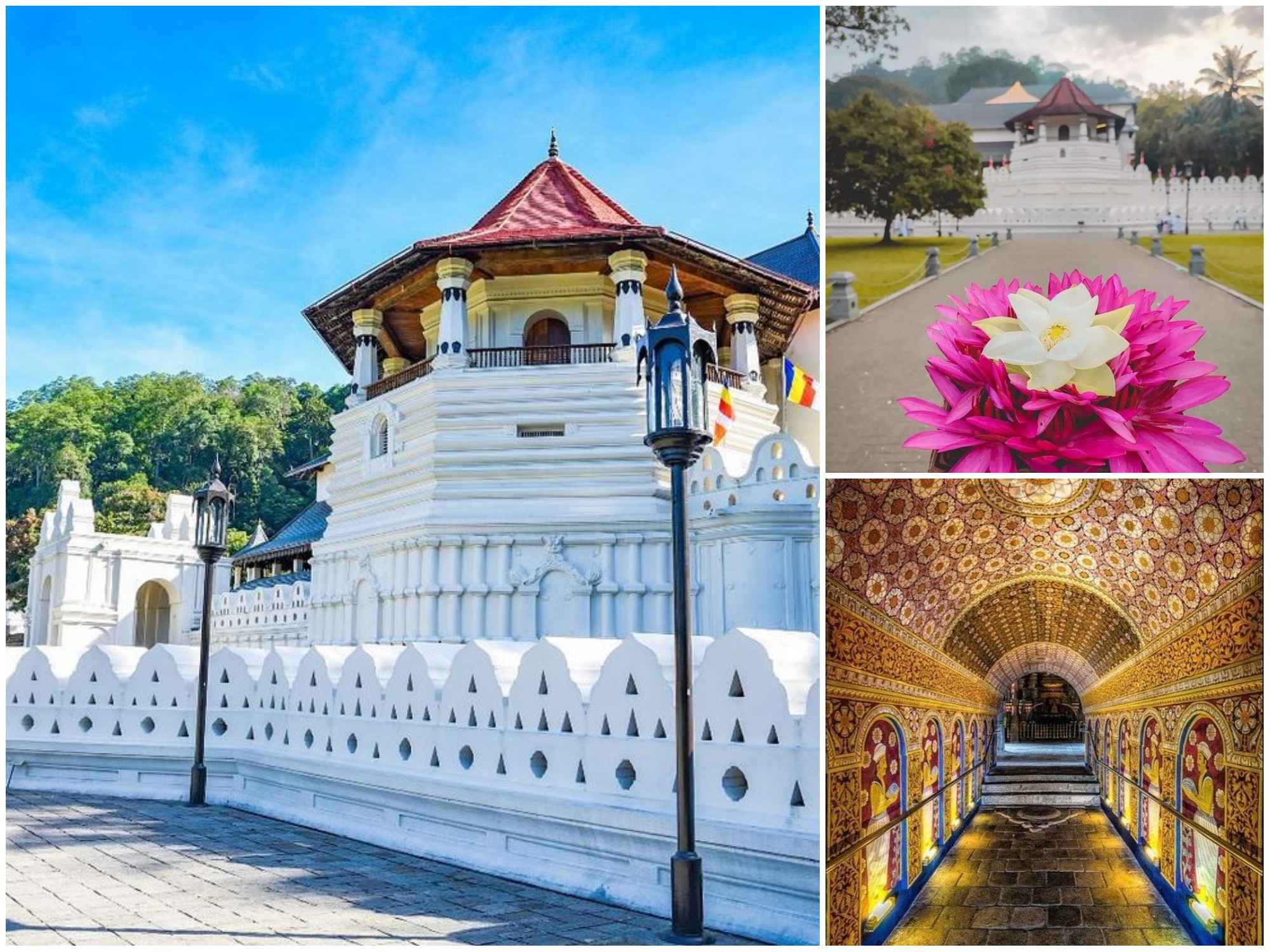
The Temple of the Tooth Relic
The Pittirippuva and outer buildings
The temple’s exterior is classically plain .A rather grim collection of plain white buildings whose hipped roofs rise in tiers against the rich green backcloth of the Udawattakele Sanctuary. The most eye-catching exterior feature is the octagonal tower or the Pittirippuva. Sri Wickrama Rajasinha used the upper part as a platform from which to address his people, and it’s now where all new Sri Lankan heads of state give their first speech to the nation.
The entrance to the temple proper is through the Maha Vahalkada which was formerly the main entrance to the royal palace as well as the temple. A sumptuous carving of Lakshmi stands by the entrance . Once through the gateway, turn right and walk up further steps covered by a canopy painted with lotuses and pictures of the perahera. The ticket office is at the top of the steps by the entrance to the temple proper, via a gorgeously carved stone door adorned with a moonstone, guardstones and topped by a makara torana archway.
Alut Maligawa
Behind the shrine stands the three-storey Alut Maligawa, a newer and larger shrine hall displaying dozens of sitting Buddhas donated by Thai devotees. The upper two floors of the Alut Maligawa contain the Sri Dalada Museum (Open 7.30am- 6pm), with a spectacular array of gold-plated gifts to the temple. Letters and diary entries from the British time
Audience Hall
To the north inside the compound, and accessible only via the Temple of the Sacred Tooth Relic, is the 19th-century Audience Hall, an open-air pavilion with stone columns carved to look like wooden pillars. Nearby in the Rajah Tusker Hall are the remains of Rajah, the Maligawa tusker who died in 1988
Sri Dalada Museum
Exit the back door of the Alut Maligawa and follow the signs up to the Sri Dalada Museum (Tooth Relic Museum). This is situated on the first and second floors of the building and dedicated to anything and everything concerned with the Tooth Relic itself. The first floor is dominated by a sequence of large and solemn statues and portraits of all the diyawardene nilame (temple chiefs) from 1814 to 1985. Other exhibits include photos of the damage caused by the 1998 bombing, fragments of murals destroyed in the blast, a selection of documents relating to the Tooth Relic and Kandy, and a few old fabrics, including a selection of the massive handkerchiefs designed for the royal noses of the kings of Kandy. The more interesting second floor is largely occupied by the mystifying variety of objects offered to the Tooth Relic at various times. These include all sorts of bowls and vases, fans, fancy jewellery, incense burners, foreign coins and votive offerings, including several given by former Sri Lankan presidents.
The Royal Palace and around
The Temple of the Tooth originally lay at the heart of the extensive Royal Palace, a self-contained complex of buildings surrounding the temple and housing various royal residences, audience chambers and associated structures. Significant sections of the original palace complex survive, although it’s difficult to get a very clear sense of how it would originally have looked, thanks to the many additions and modifications made to the area since 1815. Several of the buildings are now used as museums, and although none is of outstanding individual interest, taken together they provide a pleasant Sight of what the former royal district would have looked like .
The layout of the surviving palace buildings is rather confusing. Two of its buildings – the Audience Hall and Raja Tusker Museum – can only be reached by going through the Temple of the Tooth. The others, including the National and Archeological museums, are reached by walking around the outside of the temple along the lakeside
The devales
Kandy traditionally lies under the protection of four gods, each of whom is honoured with a temple in the city. Three of these temples, the Pattini, Natha and Vishnudevales, sit next to one another just in front of the Temple of the Tooth . . The fourth devale, dedicated to Kataragama, lies a couple of blocks west in the city itself. Besides their obvious artistic merits, the devales offer a charming message in the way in which Hindu and Buddhist beliefs shaded into one another in Kandy .Two of the four devales are dedicated to adopted Hindu gods, while the principal shrine of the Natha devale is housed in a building which wouldn’t look out of place in South India.
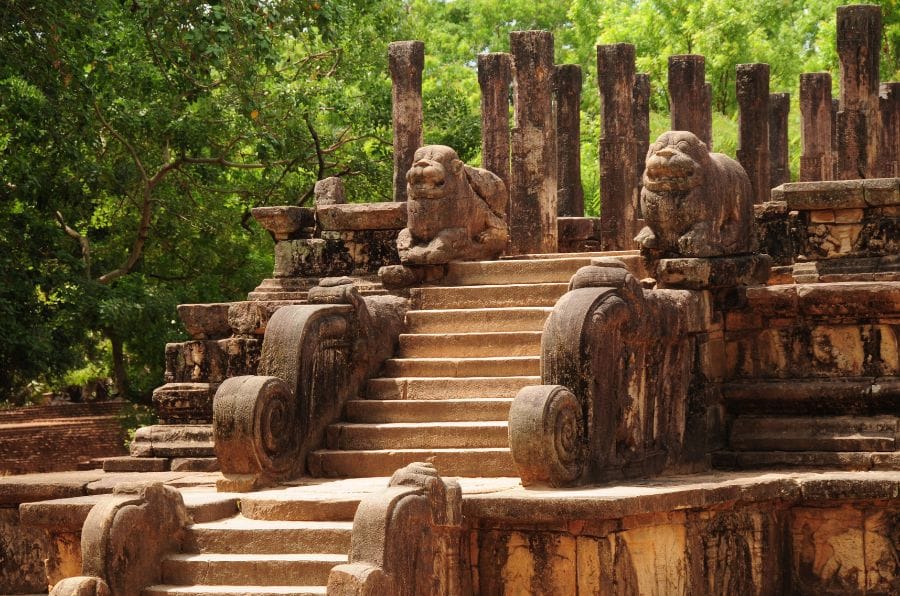
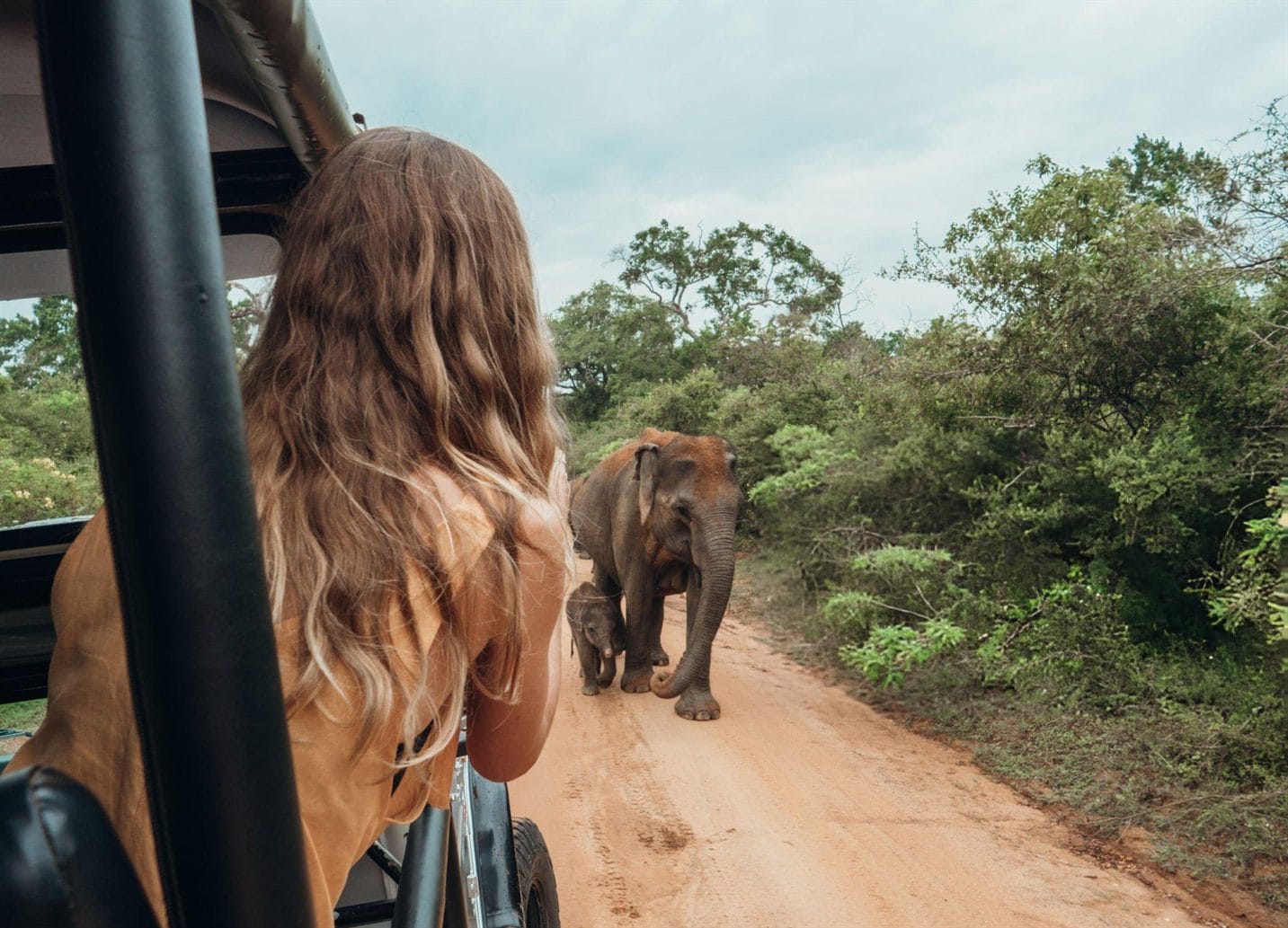
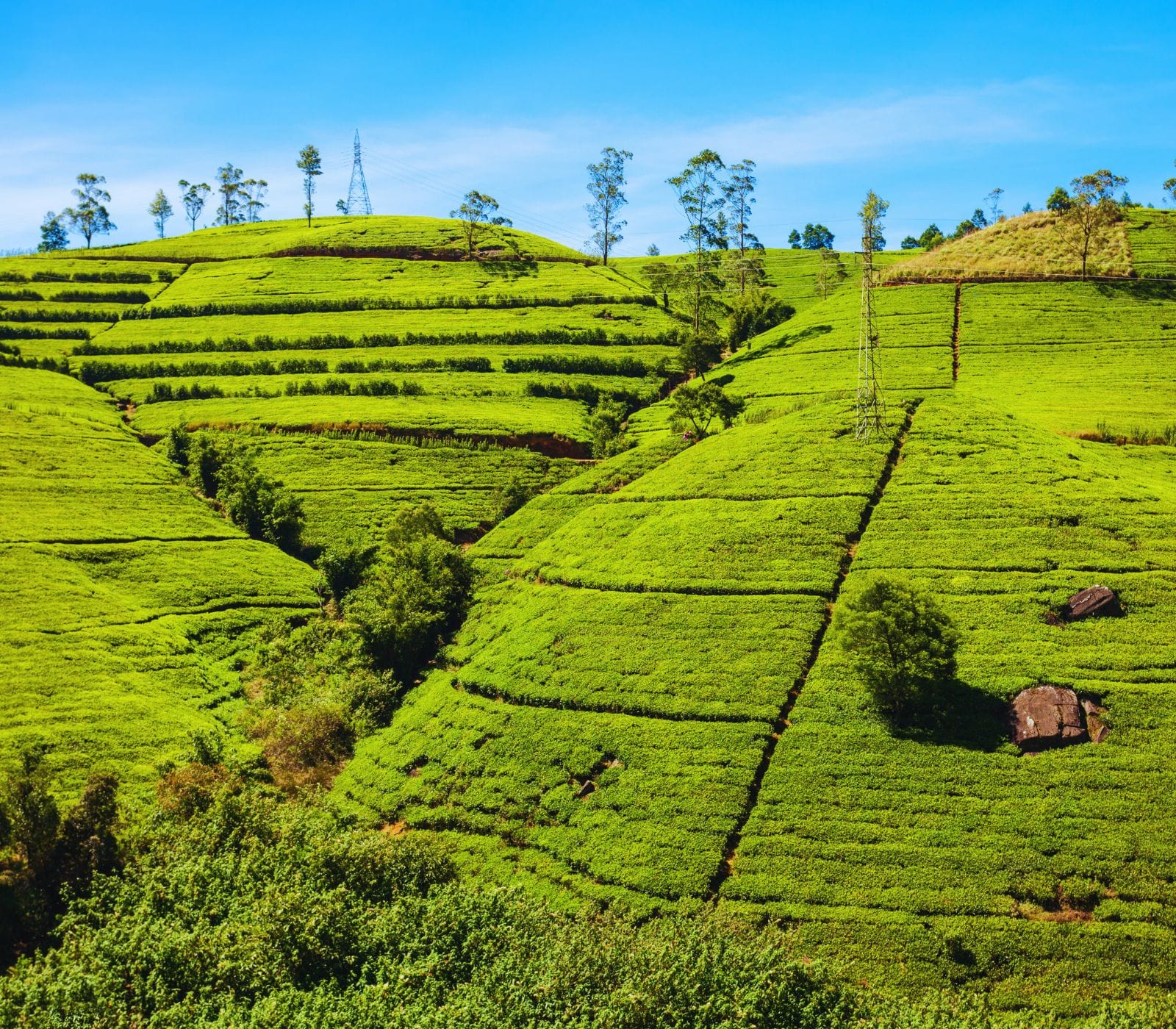
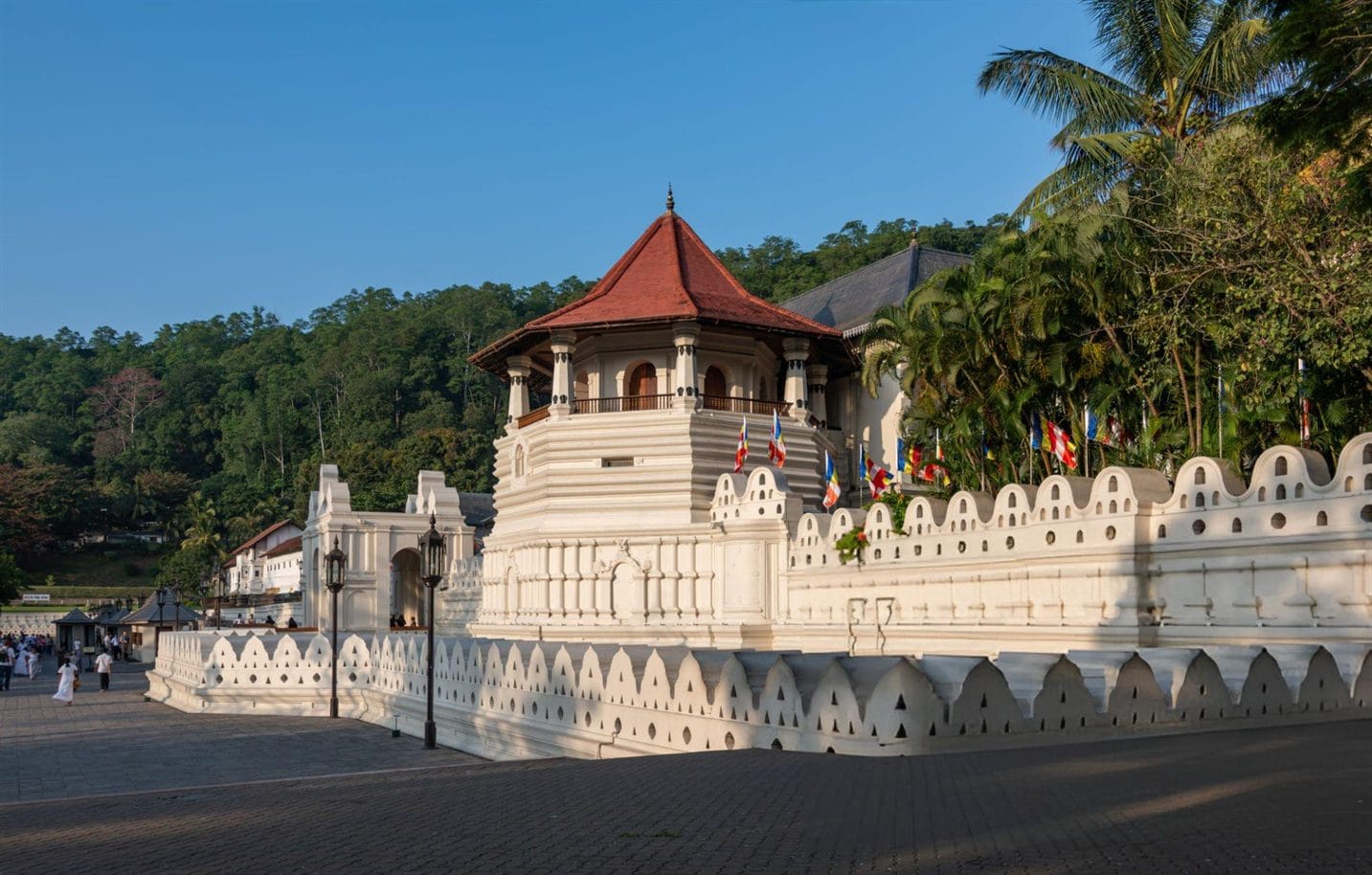
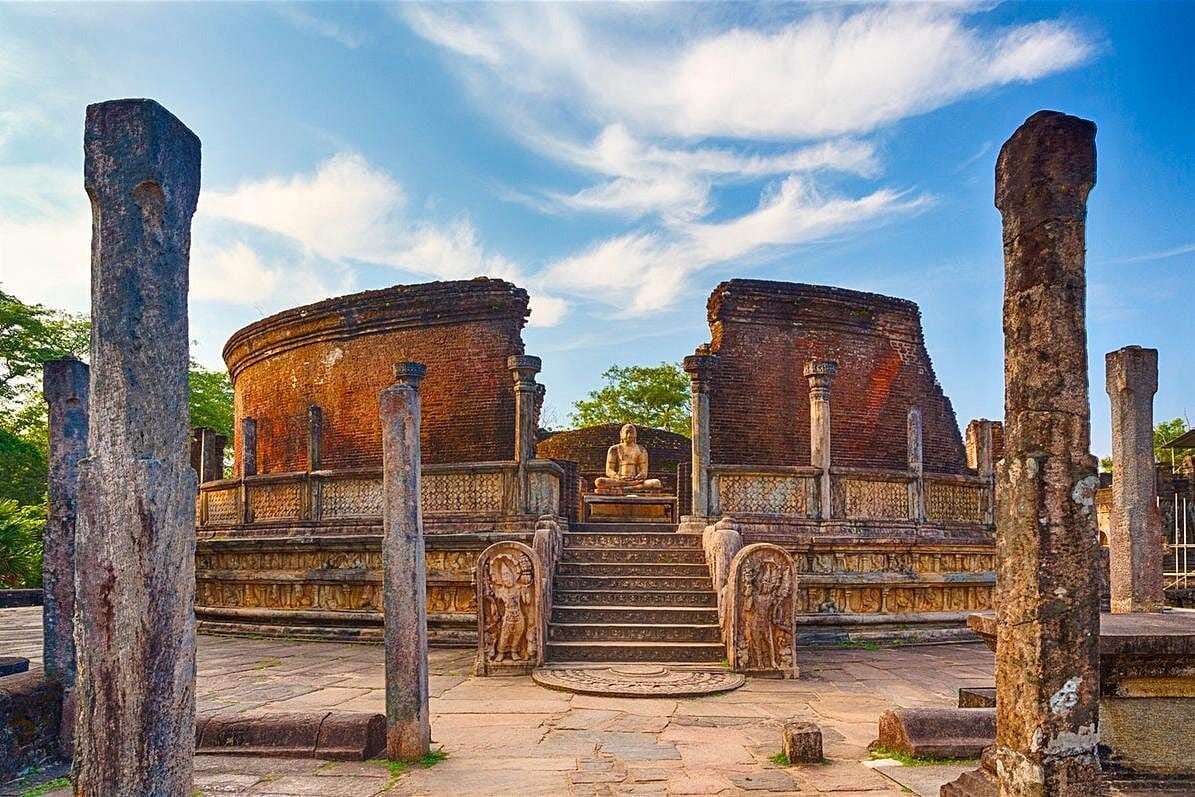



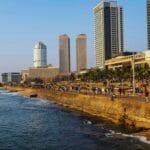

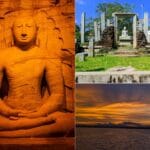


Leave a comment: